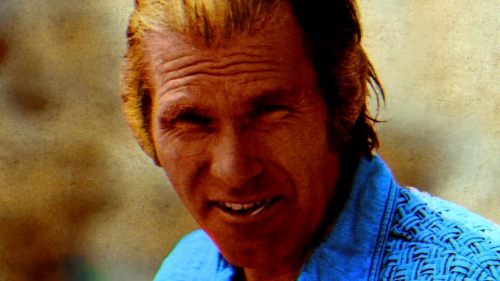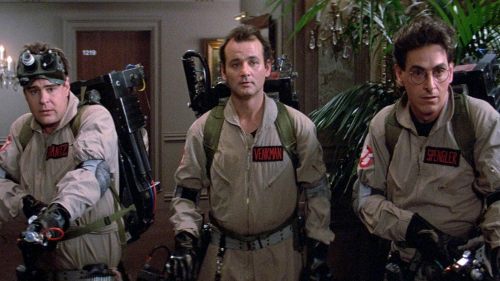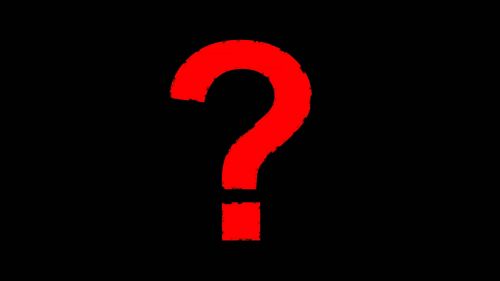Collins’ Crypt: Giving The FINAL DESTINATION Series Its Due
Looking back, I suspect that merchandising was at least part of the reason that the Elm Street, Friday the 13th, etc. series endured for as long as they did. As the movies stopped coming along as frequently, the characters themselves never went away, popping up as action figures, model kits, and of course costumes. This kept them "alive" until their next big screen adventure, which could conceivably attract newer (younger) fans who perhaps weren't old enough to go see the last installment, but were allowed to read the Fangoria issues about it, or dress up as the namesake villain for Halloween. When a franchise lacks that sort of easy hook, it's harder to maintain the notoriety - there are about a dozen Amityville movies, for example, but unless you count the windows (not exactly a popular costume) it hasn't produced anything to permeate pop culture the way Freddy's glove or Jason's hockey mask has been able to.
Which makes the success of the Final Destination series all the more impressive, because it lacked a traditional villain - death is not a traditional boogeyman type, but an unseen force that subtly (or not-so-subtly) manipulates a variety of objects that ultimately lead to someone's demise. This, of course, is what gave the film its unique appeal - the Rube Goldbergian death scenes that could strike anywhere, often relying on poorly installed/assembled equipment and household objects, not to mention an alarming number of frayed wires that happened to land near water or other liquids. It also has few recurring characters - Tony Todd's mysterious morgue attendant Bludworth has appeared in three of the five films, but his combined screentime is probably under 20 minutes, and Ali Larter's heroine character from the original came back only once - there hasn't been any major connective tissue between the films since (except for a twist in the last film; more on that later). There is no Tommy Jarvis or Sam Loomis type - anyone who manages to survive (and there haven't been many) is usually killed off via newspaper clipping in the next film.
And yet, the films struck a chord with audiences; even the disappointing domestic grosses for the 5th entry were higher than most other horror films that year (only Insidious and Paranormal Activity 3 outperformed it), and their popularity only increased overseas thanks to the addition of 3D (for parts 4 and 5). Despite no ongoing story threads and an admitted sense of deja vu (the sequels never strayed too far from the template established by the original), people kept coming back to see the new death sequences and discover what wrinkles the new films would add to the basic storyline. That plot, for those who haven't seen the films, is fairly genius: a character has a premonition of a major disaster that will kill them and their friends (and various strangers), so they get off the plane/highway/roller coaster/etc. and watch helplessly as everyone who didn't listen to them perishes in the accident they saw coming. However, after this the survivors find themselves being offed one by one, as it turns out Death doesn't like being cheated. But he also doesn't like doing things quickly and/or easily, so the death scenes become Mouse Trap-esque chain reactions that got more and more elaborate as the series went on, providing the audience with the same sort of cheap/fun thrills they'd get from the later Friday the 13th films, where it became a game of "What will he use this time to kill people?"

Unsurprisingly, the first film had the simplest ones - a guy slips in the shower and hangs himself on a makeshift clothesline, a monitor explodes due to a spilled drink and the glass into the neck of its victim, things like that. They were more advanced than the average slasher kill, of course, but also reasonably within the realm of reality, unlike the increasingly far-fetched sequels. The first film is also probably the darkest in the series; there was some gallows humor, but with themes of suicide and depression (the first death, the aforementioned hanging, is believed to be intentional), you get the sense that they weren't just aiming at teenagers. Not to mention plane crashes are far more common than any of the other accidents we've seen in the sequels, lending it a bit of uncomfortable reality (there are rumors the film was legitimately inspired by a real-life crash that included a traveling class, but the first draft preceded that incident). Indeed, the film has a running gag where all of the characters are named after old-school horror directors: Browning, Lewton, Murnau, etc., suggesting they were more inspired by the suspenseful films of old than their fellow New Line productions (i.e. Freddy and Jason). It's the sort of solid horror film you expect to make a few "best horror films of ____" lists and get ripped off every now and then - I certainly wasn't thinking it would produce several sequels when I saw it on opening night.
But as usual, I was wrong, and a few years later Final Destination 2 hit theaters, from a new creative team but the same producers (Craig Perry and Warren Zide, who are pretty much the only consistent presences for all five films) and a story credit from Jeffrey Reddick, who co-wrote the original. David R. Ellis (RIP) took over directing from James Wong, and new writers J. Mackye Gruber and Eric Bress were tasked with screenwriting duties (replacing Wong and his frequent partner Glen Morgan). Despite this overhaul, as previously mentioned FD2 is the only one to carry over a character besides Bludworth, and a (kind of goofy) twist involves all of the new characters being affected by the events of the first film, For example, the male hero of FD2, played by Michael Landes, is a cop who was unexpectedly called to the crime scene of Seann William Scott's character's demise in FD1, which inadvertently saved his life as he otherwise would have been killed along with his partner at their original, er, destination. If it was just this one guy it'd be one thing, but all seven of our new heroes had similar crossed paths with the (otherwise unseen, because they're all dead) FD1 characters, and they all happened to end up on the same highway a year later? Even for this series it's kind of hard to buy.
That said, the movie is a blast, and probably my favorite entry (hence why I hosted a screening of it ten years later, honoring the recently departed Ellis). Not only is the opening sequence (kicked off by a logging truck that spills its load) a remarkable achievement and case study in how to effectively blend practical stuntwork and computer FX, but it's also got some of the series' most memorable death scenes - the plate glass kill remains my favorite out of the forty or so we've been blessed with over the years. It also offered a motley group of protagonists, as they didn't all know each other beforehand, allowing some natural character development to arise out of the "getting to know you" stuff that wouldn't occur when everyone already knew each other, which is the case in parts 1, 3, and 5 (the fourth film offered this scenario as well, but blundered it by focusing only on the four main friends and ignoring everyone else until they were about to die). Plus, as I was eleven years away from getting oversensitive about such things, it offers the series' youngest murder, as one of the people who escaped Death and paid the price later was only 14 or 15 - the other teen protagonists were always transitioning from high school to college. And if you can't relate a bit to that one guy's dying request that someone clean up any embarrassing stuff in his room so his mom didn't see it, I don't know what to tell you.

The third film brought back Morgan and Wong, and focused on a roller coaster that malfunctioned. Again, this one was completely stand-alone; Tony Todd only provided a voice for the roller coaster's "host" instead of reprising his Bludworth character, and it was thankfully free of any complicated callbacks to the first or second films. It's also probably the least interesting one in the series, sadly - while Mary Elizabeth Winstead is always welcome (she played the one who got the now-obligatory premonition), the new idea of her photos providing clues to how everyone would die wasn't as exciting as it could have been, and there is almost nothing to the movie beyond a series of scenes where her and the male lead (Ryan Merriman) try to warn another friend of their death, only to fail. It also offers an insanely goofy twist where Winstead's character somehow failed to notice her own sister sitting behind her on the roller coaster, straining credibility much too far in the wrong direction for this already highly improbable series. It's enjoyable enough, and has probably resulted in a decline in roller coaster participation, but if you had to skip one entry in the franchise, this would probably be the least essential.
Some might claim that 2009's The Final Destination (with Ellis and Bress returning) should earn that dishonor, but while it's probably not as good as FD3 on a traditional grading scale, it at least offers up some of the series' more interesting scenarios, and distills the experience to its purest form (by that I mean it's barely over 80 minutes and features almost zero scenes that don't involve death traps), making it one of the better ones to watch with a crowd. For starters, it's the only one that features a sort of ticking clock scenario, as our heroes split up to try to save two of their friends who are in different spots - but died simultaneously in the vision. It also allows one of the better 3rd act twists, in that a character who they assumed died was actually just seriously injured and in the hospital. So this throws off the usual "everyone will die in the same order they died in the vision" thing, making one character temporarily invincible until Death takes care of this poor other bastard. To be fair, the leads are abysmal (I've seen the movie three times and I still couldn't tell you any of their names) and the car race disaster didn't have the same universal appeal (read: potential actual fear) that the others offered, but I think this one deserves a little more credit than it's gotten.
It was also the first one to be shot in 3D, for a series that is better suited for the gimmick than any other horror franchise I can think of - in fact they planned to do the previous film that way but dropped the idea. This was before Avatar, when 3D films were still exciting and relatively rare, so despite the series' worst reviews it actually ended up being the highest grossing one (2nd highest when inflation is factored), which is fairly amusing to me considering it's pretty much universally considered the series' creative low point. 3D was retained for the fifth and final installment, but despite it being Wong's "turn" to direct again, a new creative team was brought in: first time feature director (but longtime second unit director for James Cameron) Steven Quale and future Oscar nominee Eric Heisserer. However, they offered up the series' most direct line of continuity since FD2, as they not only brought back Bludworth, but also pulled a knockout of a twist on us at the end.
(Spoiler for six year old movie ahead!)
See, all of the movies end pretty much the same way - the people who thought they escaped Death end up dying in some other disaster - i.e. Winstead and her pals are killed in a subway crash in FD3. This one is no different - our heroes (Nicholas D'Agosto and Emma Bell, a huge improvement over the previous pair) feel they've "won" and get on with their lives, which is kicking off with a trip to Paris. As they board the plane, they notice a commotion across the aisle, and then we realize that their impending death isn't just some random disaster - it's the plane crash that kicked off the first film, and we've actually been watching a prequel this entire time. Quale and Heisserer don't even really hide the fact that the film was set 11-12 years prior - characters listen to Everclear and the license plates feature old designs (and the 2000 setting is even revealed once or twice, like on a gift certificate's expiration date, seen in closeup!), but it still threw me and several others for a loop at the film's initial screenings, before it got spoiled.

It was also just a genuinely good entry in the series, returning it to its darker roots and once again introducing a new concept to mix up the formula a bit. Per Bludworth, Death just needs to "balance the books", so the folks who escaped Death can apparently kill someone and get that person's time - if that random slob you offed was supposed to live another fifty years, now YOU would instead. This gives the series a rare human villain of note, as one of the survivors turns on Emma Bell's character, as she was never going to die in the opening sequence and thus presumably has a long healthy life ahead of her. And the kills, while entertaining and well-designed, were thankfully less ridiculous than in the previous two entries, in which things like cans of hairspray seemed to become sentient as they moved around as easily as a paper in the breeze. Hell, one guy simply gets shot! Alas, the box office was not up to par (though it still made a tidy profit thanks to overseas grosses), so that coupled with New Line's increased distance from the horror genre (unless James Wan is involved, that is - since 2013 they've only released one horror film that DIDN'T have his name on it) has put the series in limbo.
At least, for now. A million words ago I mentioned how the series maintained its popularity despite the lack of a traditional villain or stable of recurring characters, but that also means the title alone is all you really need to bring it back, without having to worry about recasting actors, picking up dormant story threads, etc. Six years in the real world (well, technically eight given the last one's prequel status) has produced any number of new objects and technological advances that can be used for the series' trademark death scenes - smartcars, iPads, and fidget spinners can all be put to good use by a fresh crop of folks who have managed to cheat Death for a day or two. Plus there are so many disaster options they've yet to explore in the movies (though the YA novels might have taken care of a few; I haven't read them), such as boats, ski lifts, or some sort of natural disaster tearing through a Wal-mart kind of store. Now that 3D is largely over it can go 2D and probably be cheaper to make a new entry than the last couple (and since it's always been a New Line/Warner production, it wouldn't be susceptible to the same messy rights situation that has plagued the Friday the 13th series), so I think they're throwing money away by leaving the franchise in moth balls.
But if they do leave it buried, we'll have a true rarity in horror: a major franchise that never got to the point where we didn't want another one. They never ignored entries (even FD4, which is probably the most disconnected entry, pays tributes to the other entries' kills in its credit sequence), screwed up basic continuity (i.e. Friday the 13th's inability to pin Crystal Lake down to New Jersey or Connecticut), or tried to reinvent the wheel - they didn't fix what wasn't broken. As a result, we have five very enjoyable films that offer enough distinction to tell them apart, but not so much that they end up neglecting to provide what we paid for. There's a trust there that tells me that if they ever do decide to revive the series, I'll get exactly what I want out of the deal, spending another 90 minutes applauding at another batch of gory/funny kills. Here's hoping I get to find out someday.



